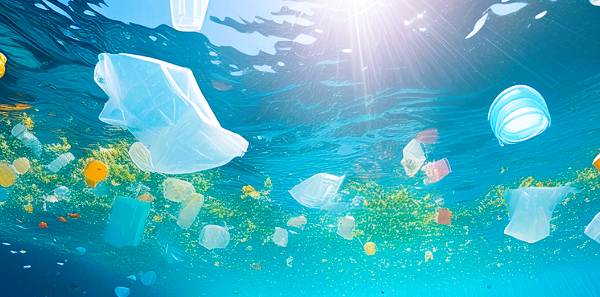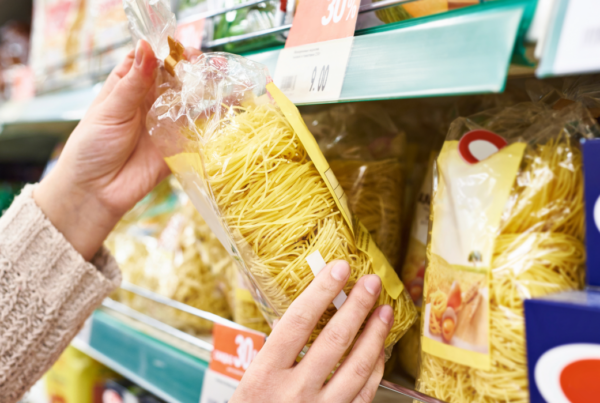This article is provides an expert overview on the advantages of using Aquapak’s base polymer – polyvinyl alcohol (PVOH) – and is very pertinent to today’s drive towards sustainable packaging.
Lawrence Dull is a world renowned expert in packaging and is one of only 150 packaging professionals to be voted into the Packaging Hall of Fame. Larry has 8 patents and has pioneered global Sustainability Standards including Wal-Mart’s Sustainable Scorecard Process. He is a regular guest speaker, lecturer and author including the IoPP’s “Fundamentals of Packaging Technology” course.
The IoPP (Institute of Packaging Professionals) is a member based organisation and is a central unifying force in packaging for the benefit of its members, the packaging community and society.

Uses and Benefits of Polyvinyl Alcohol in Packaging
“Single-use plastics and plastic packaging are under increasing pressure today, as evidenced by the growing number of taxes or outright bans on everything from plastic bags to drinking straws. Conventional wisdom has said that the answer to our waste problem is re-use and recycling – creating the so-called “circular economy.” While this solution will go a long way to help our plastic waste challenge, it is not the whole solution.
Plastic packaging is being improperly disposed of (ocean plastic), current landfills are reaching capacity, and very few new landfills are being opened. Incineration for energy recovery is environmentally acceptable; however, toxic emissions from some polymers (particularly PVC) are an issue – dioxins and/or hydrochloric acid may be produced.
So, what can we as packaging engineers do to design more sustainable packaging? We can take weight out of our packaging (light weighting), we can make our packaging reusable, or we can make our packaging easily recyclable. These are the familiar three R’s – reduce, reuse, recycle. I would argue that an additional consideration should enter into this discussion – degradability.
A challenge with recycling is that it must make economic sense. That is, the costs (and confusion) associated with collecting, sorting, cleaning and reprocessing plastic packaging cannot be greater than the cost of using virgin materials. There may be some companies that will accept a slightly negative economic benefit if there is positive environmental benefit, but at most companies, economics is paramount. Post-consumer recycling of polymeric packaging materials can work well if the polymers can be separated and recovered in a cost-effective manner. This is becoming somewhat problematic in today’s marketplace given China’s recent constraints on the importation of recycled polymeric materials.
Biodegradation, on the other hand, relies on nature’s built-in capacity to recycle. Polymers can be degradable in two ways – photodegradable or biodegradable. One definition of biodegradable polymers includes the requirement that the primary degradation mechanism is the result of the action and metabolism of microorganisms. Biodegradation can take place in either aerobic or anaerobic environments.
I first started working with a novel polymer in the late 1980s that side-steps traditional waste stream and recycling issues because it dissolves in water and biodegrades. It’s worth revisiting that work today to see if it might spark new innovations that might help solve some of our current waste challenges.
Polyvinyl alcohol (PVOH) is a material that has been utilized in many applications for almost one hundred years. Many packaging engineers will recognize it as the polymer used in films for the detergent “pods” that have become so popular in recent years. What fewer people might know, however, is that over 30 years ago a handful of packaging engineers also created bottles, string, fibers, non-wovens and a host of other functional materials out of PVOH.
Do biodegradable materials make sense as a part of today’s environmental discussion? I think they do. Furthermore, I think packaging engineers and product designers should add PVOH to their toolbox of materials when designing environmentally responsible products and packaging.
For consumer products such as household detergents, OECD 301 and 302 test procedures have gained wide acceptability as standard test methods to characterize the biodegradability of water-soluble films based on polymers such as PVOH in the aerobic wastewater environment. Research has indicated that PVOH is biodegraded by more than fifty-five species of microorganisms (many of which are commonly found in municipal and industrial wastewater treatment systems).
Studies have also shown that PVOH in combination with other synthetic and/or natural materials is biodegradable. In fact, the degradation mechanisms for PVOH have been fully studied and the pathway has been established as: first, random chain scission of the polymer molecule to acetic acid; and second, the oxidation of the acetic acid to carbon dioxide and water. It is thus obvious that the final biodegradation products of PVOH are very innocuous compounds.
Even as improvements are made to global recycling systems, packaging engineers should be aware of the advantageous properties of PVOH as a packaging material (water solubility and biodegradability) and include it in their list of possible materials when designing new packaging systems. Recent years have seen the publication of more data concerning the carbon footprint of PVOH so it is now easier than ever to evaluate the environmental impacts of utilizing this unique material. Moreover, advances in both chemistry and manufacturing technologies likely have removed some of the price and technological barriers to fully commercializing some of those earlier innovations. The social and environmental urgency to bring such innovations to market is certainly now present in the marketplace as well.”
Lawrence Dull, President Packaging Technology Associates, Inc. IoPP Fellow



